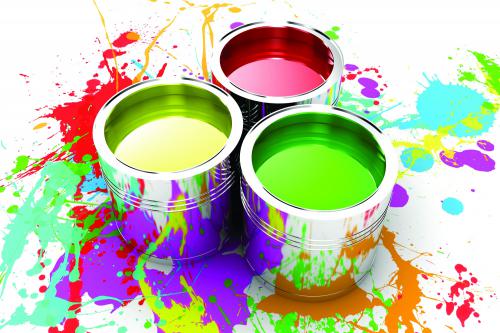Ink

Today's printer ink is made of what is called carbon black, a pigment which is actually similar to the soot that was used in ancient times. ... Pigments can also bring abrasiveness or gloss to a surface, or provide it with a chemical resistance to heat, light, and solvents. They are a vital part of how printer ink is made.
Other Types of Printer Ink
- Liquid Ink. Just as the name implies, this ink comes in liquid form. ...
- Solid Ink. Some printers use solid ink instead of liquid ink. ...
- Toner. ...
- Ribbon Ink. ...
- UV Ink. ...
- 3D Printing Ink.
- Printing inks
- Printing inks contain three components: the vehicle, the coloring ingredients, and the additives. The vehicle, responsible for transferring the coloring ingredients from the ink fountain to the type form, can be either a vegetable base (linseed, rosin, or wood oils), which dries by penetration and oxidation and at the same time ensures fixation, or a solvent base derived from kerosene, in which case drying takes place by evaporation. The coloring ingredients come in several forms: pigments, which are fine, solid particles manufactured from chemicals, generally insoluble in water and only slightly soluble in solvents; agents made from chemicals but soluble both in water and in solvents; and lacquers, obtained by fixing a coloring agent on powdered aluminum. The additives stabilize the mixture and give the ink additional desirable characteristics. The nature and proportions of the ingredients vary according to the printing process to be used and to the material to be printed. The proportions must be checked and sometimes modified during printing.
Roller Printing
- This technique is used whenever long runs of fabric are to be printed with the same design. The modern machin, based on one originally devised in 1783, consists of a large central cast-iron cylinder over which passes a thick endless blanket providing a resilient support for the fabric. Backing fabrics, called back grays, are placed between the blanket and the fabric to prevent undue staining of the blanket. Although formerly made of cotton fabric, most modern back grays are continuous belts of nylon The blanket and back gray are appropriately tensioned, so that the fabric moves through the machine as the central cylinder rotates. Engraved printing rollers, one for each colour, press against the fabric and the central cylinder. The pattern on the roller is etched on the surface of a copper shell supported on a mandrel. High-quality engraving is essential for good printing. Each printing roller is provided with a rotating colour-furnishing roller, partially immersed in a trough of printing paste. Finely ground blades (doctor blades) remove excess colour paste from the unengraved areas of these rollers, and each also has a lint blade. The printed fabric passes from the main cylinder and through a drying and steaming chamber to fix the colour. Although this machine prints only one side of the fabric, the Duplex roller machine, essentially a combination of two roller machines, prints both sides. Modern printing machines are smooth-running precision machines fitted with carefully designed roller bearings and hydraulic or pneumatic mechanisms to ensure uniform pressure and flexibility. Pressure is regulated from an instrument panel, and each roller is controlled independently. Automatic registration is effected by electromagnetic push-button control, and modern electric motors provide smooth-running, variable-speed drives. The washing of back grays and printer’s blankets has also been automated.
- Spray printing is the application of colour from spray guns through stencils and has limited but occasionally profitable use.
Settings
Tags
Roller Printing Printing inks 3D Printing Ink UV Ink Ribbon Ink Liquid Ink printing inks for food packaging printing inks first practiced in printing inks are principally made up of printing inks for direct food contact printing inks hs code printing inks market printing inks for fabric printing inks amazon printing inks at argos printing inks and coatings
Roller Printing Printing inks 3D Printing Ink UV Ink Ribbon Ink Liquid Ink printing inks for food packaging printing inks first practiced in printing inks are principally made up of printing inks for direct food contact printing inks hs code printing inks market printing inks for fabric printing inks amazon printing inks at argos printing inks and coatings
Related Content
User notes
Insert a note
: